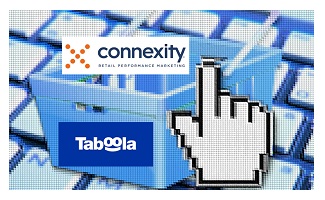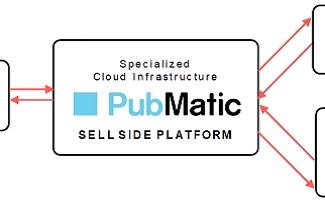The advertising business is currently experiencing a major shake-up. Generative Artificial Intelligence (GenAI) is starting to transform the production, distribution, and measurement of online advertisements.
Automation and machine learning have been part of ad tech for years; real-time bidding on online ads wouldn’t exist without them. But GenAI is a different paradigm, and it is evolving quickly, forcing agencies and advertisers to rethink their business models.
Industry Transformation and Stakeholder Adaptation
Advertising has always been quick to adapt to new technologies, from billboards to sponsorship-based television programming, to the digital age and programmatic ad buying. Every shift has required a way of thinking.
GenAI seems to be the next significant change. Tech companies, agencies, advertisers, and media platforms are all experimenting, trying to use the new tech but not lose market share. This development, unlike the past changes, affects both the creative and execution side, and it touches almost every part of the industry.
Five-Year Market Trends: Rapid Growth and Shifting Power
The landscape is rapidly changing, not only because of GenAI but also because of significant changes in spending and market share. Total online advertising expenditure is expected to grow by 87% between 2020 and 2025, and rise by another 6.5% next year (see Figure 1).
The details reveal the true story: during this period, Amazon (NASDAQ: AMZN) leads with a staggering 233% growth in online advertising revenue; Alphabet (NASDAQ: GOOGL) and Meta (NASDAQ: META) have growth rates of 63% and 79%, respectively; and the “Other” advertising platforms (excluding Alphabet, Amazon, and Meta) have a growth rate of 90%.
This “Other” category includes new platforms like TikTok, Snap (NYSE: SNAP), Spotify (NYSE: SPOT), retail media networks, and niche technology providers. They are growing faster than the market average and some of the established giants, which signals increasing advertiser demand for alternative platforms and innovation, rather than consolidation..
Dominance of the Big Three
Alphabet, Amazon, and Meta remain leaders and dominate. They built their systems on AI, real-time bidding, and campaign automation, which are the pillars of digital advertising. They are currently adding GenAI to the toolsets that advertisers currently use.
Their market share dominance is seen in their joint control of 55.8% of the world’s advertising spend outside China in 2025, compared to 52% in 2024 and 49% in the previous year.
Although their platforms provide smaller advertisers with access to automation and targeting, their growing power is a cause of concern in terms of industry concentration and the declining role of independent agencies.
However, growth is happening at the margins, with up-and-coming platforms and niche players successfully taking “a piece of a growing pie”.
The Competitive Advantage for Challengers
These growth trends highlight a bright and competitive future of advertising platforms that are growing faster than the market as a whole and even some of the most successful in the industry. The statistics indicate that innovation, agility, and audience diversification are effective strategies.
This means that advertisers and agencies will have to invest in planning and budgeting on niche and challenger platforms alongside the giants. For tech providers and new entrants, the tide is in their favor; there is plenty of room to win new spend with specialized offerings and next-generation engagement formats.
The ecosystem is expanding, not merely consolidating, as GenAI and automation increase. Companies that are ready to be innovative and experiment outside the mainstream channels gain more and more. The days of a monolithic advertising market controlled by a small number of players are being replaced by a period where creativity, specialized solutions, and platform diversity are of increased importance.
Canadian Ad Tech Companies Poised to Benefit from Industry Growth
As online advertising spending accelerates, a number of publicly traded Canadian advertising technology firms are directly poised to gain as more investment is made in data-driven, AI-based campaigns and advertising automation. The players to watch are:
- EQ Works (TSXV: EQ), a Toronto-based technology company that provides software-as-a-service solutions that help businesses to understand and impact customer behavior using data-driven insights. Leveraging a combination of unique datasets, machine learning, artificial intelligence, and advanced analytics, EQ assists organizations in discovering, connecting, and growing their key customer segments. Its proprietary platform derives insights based on movement and geospatial data to connect digital marketing activities with real-world consumer behavior to allow accurate audience targeting and measurement. EQ has a wide range of clients, such as automotive, insurance, media, retail, and real estate, with products like the Locus geospatial analytics platform and Atom, a self-service programmatic media buying platform. Moreover, EQ purchased Paymi, a card-linked cashback rewards platform, to complement its data offerings with transaction-based insights, thereby offering customer segmentation, location planning, media campaign optimization, and real-time analytics capabilities.
- Nextech3D.ai (CSE: NTAR) is a technology company specializing in AI-powered 3D and augmented reality (AR) solutions for e-commerce, marketing, and events. The company’s patented 2D to 3D technology enables the conversion of images into high-quality 3D models, supporting interactive and immersive digital experiences. Nextech3D.ai also owns a controlling interest in two spin-outs: ARway.ai (CSE: ARWY), an AI-driven AR experience platform, and Toggle3D.ai (CSE: TGGL), which offers generative AI tools for 3D model creation and publishing. The company serves e-commerce brands seeking advanced 3D content for online retail and digital marketing and has established partnerships, including supplying 3D models for Amazon.
- Adcore Inc. (TSXV: ADCO) provides AI-based digital advertising solutions. Its machine-learning algorithms and automation tools enable scaling of campaigns, optimization of spending, and maximization of returns, which are essential in an industry that is moving towards more personalized, automated, and data-rich media buying conditions.
- Zoomd Technologies (TSXV: ZOMD) provides a SaaS platform focused on user acquisition and campaign management across multiple digital channels. Their platform enables advertisers and agencies to efficiently run and optimize multichannel campaigns, improving user acquisition strategies in an increasingly complex and diversified media landscape.
FIGURE 1: Global Online Ad Spend

Creative Capabilities and the Threat to Agencies
The creative side of GenAI is advancing quickly. Meta now lets advertisers swap backgrounds or languages in ads with a few clicks. TikTok is offering AI-generated video. Google is pushing out more automated asset production.
In the case of small and medium-sized enterprises, it means that campaigns can be prepared faster, customized more, and implemented at a lower price. But the flipside is clear: as advertisers can do more work on their own, what happens to agencies?
Mark Zuckerberg has claimed that much of the advertising process at Facebook will be automated soon. Sam Altman of OpenAI went even further, predicting that AI would eventually be able to handle the entire range of agency and creative tasks. That’s not something agencies want to hear.
The Ongoing Role of Human Creativity
Not everyone is convinced. It is still unclear whether GenAI can produce original and unique creative ideas. The systems rely on existing data, and this poses a threat of making the ads look identical across brands. Homogenization is the word critics keep using.
Proponents say the human creative direction is essential as it keeps ads fresh and in line with the voice of a brand. Furthermore, managing a complete campaign with the help of AI has the risk of brand dilution, inappropriate messaging, or the use of poor-quality data that will ruin the campaign.
These risks highlight the fact that human control and brand-building strategies remain so important.
Economic and Strategic Trade-offs
The efficiency promise is strong, but it comes with trade-offs. Although hyper-personalization has the potential to increase engagement, it often increases the cost per click, which has long been a problem in programmatic advertising.
However, well-known brands are in a better position to resist such pressures. Procter and Gamble is a good example of this resilience; even with the inflationary increases, the company has managed to transfer the increased costs without reducing sales, which proves that brand strength is more than just automation.
At the same time, paid search, which continues to take half of the digital advertising budget, is changing. People are using social networks and interactive AI more and more instead of typing in search engine queries. To be competitive, advertisers have to change.
Legal and Ownership Challenges
The legal aspect is murky. Many AI models are trained using copyrighted content, which opens the door to lawsuits.
Who owns the content GenAI produces? U.S. copyright law generally requires significant human involvement before something qualifies, which means that the purely AI-generated content might not be under the protection of the law. This ambiguity makes it difficult for anyone to monetize AI-generated work.
Agencies and advertisers might now have to think about compliance costs and legal risks, which adds another layer to the business case.
Agencies’ Enduring Value
Agencies do not disappear even in the face of widespread automation. They still bring brand-building experience, go-to-market tactics, and the ability to handle complicated media mixes, which is especially needed by large clients.
Although AI tools can be used to perform routine tasks, they cannot replace strategic insight or a thorough understanding of consumer behavior and media consumption. The probable future is a hybrid one: AI will do the grunt work and agencies will take on a higher level of strategy and creative direction.
Final Thoughts in a Hybrid and Expanding Online Ad Market
GenAI is pushing the advertising sector into a new paradigm. Large tech companies are tightening their hold, small companies are acquiring powerful tools, and the creative processes are speeding up. At the same time, there are threats of sameness, legal conflict, and brand dilution.
Agencies might lose some ground to automation, but their strategic and brand-management functions remain relevant. As platforms outside the Big Three continue to grow, competition and a hybrid future seem likely. The landscape that will be created will not be fully automated or fully human, but a combination of the two.
GenAI will coexist with human management of creativity, originality, and brand integrity through efficient and personalized output. The “winners” will be those who are able to use the new tech and multiple platforms for both reach and impact.
Notes: All numbers in CAD unless otherwise stated. The author of this report, and employees, consultants, and family of eResearch may own stock positions in companies mentioned in this article and may have been paid by a company mentioned in the article or research report. eResearch offers no representations or warranties that any of the information contained in this article is accurate or complete. Articles on eresearch.com are provided for general informational purposes only and do not constitute financial, investment, tax, legal, or accounting advice nor does it constitute an offer or solicitation to buy or sell any securities referred to. Individual circumstances and current events are critical to sound investment planning; anyone wishing to act on this information should consult with a financial advisor.
The article may contain “forward-looking statements” within the meaning of applicable securities legislation. Forward-looking statements are based on the opinions and assumptions of the Company’s management as of the date made. They are inherently susceptible to uncertainty and other factors that could cause actual events/results to differ materially from these forward-looking statements. Additional risks and uncertainties, including those that the Company does not know about now or that it currently deems immaterial, may also adversely affect the Company’s business or any investment therein. Any projections given are principally intended for use as objectives and are not intended, and should not be taken, as assurances that the projected results will be obtained by the Company. The assumptions used may not prove to be accurate and a potential decline in the Company’s financial condition or results of operations may negatively impact the value of its securities. Please read eResearch’s full disclaimer.




